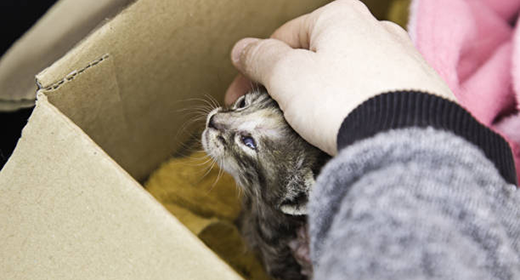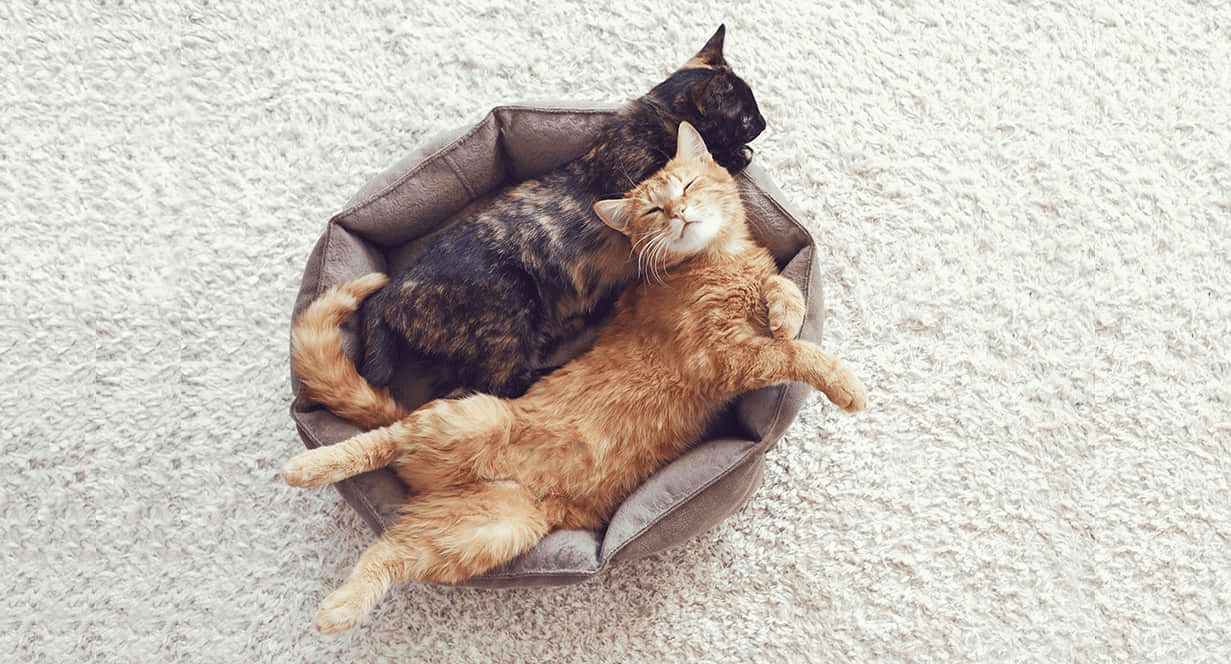

Providing your kitten with the proper nutrition goes way beyond just putting fresh food in a clean bowl. Your kitten’s nutritional needs will change as their body develops through adolescence and into adulthood. Proper nutrition during these critical growth periods will help your kitten mature into a strong, healthy adult cat.
The nutritional needs of kittens and cats are vastly different, and it’s critical to give your pet premium age-appropriate nutrition. Here’s everything you need to know about kitten food vs. cat food and how to feed your growing kitten.
After kittens are weaned, they enter a stage of rapid growth, which lasts until they’re 6 months old. They need a high-quality, balanced diet with every bite packed with the nutrients and energy needed to sustain such rapid development. The best choice is a premium kitten food with animal-based proteins. It should be highly digestible, nutrient-dense and designed to meet kittens’ unique nutritional needs, such as IAMS™ PROACTIVE HEALTH™ Mother And Kitten.
Kittens require twice as much energy as adult cats on a per-pound basis. But their smaller mouths, teeth and stomachs limit the amount of food they can digest during a single meal. It’s best to divide the total daily food amount recommended on the kitten food packaging into three or four smaller meals.
As kittens approach adult size, their nutritional requirements begin to change again. Their rate of growth begins to slow, activity levels may decline and they can start eating fewer, larger meals each day. During this stage, kittens begin to look like adults, but they are still growing and need the special nutrition found in kitten food.
During the adolescent growth stage, many cat owners are tempted to change a kitten’s food for variety. But cats do not get bored with a consistent diet of high-quality dry food, and giving a kitten “human food” and table scraps can lead to undesirable behaviors, such as begging or stealing food.
Additionally, feeding homemade diets, food formulated for adult cats or supplementing an already complete and balanced diet with vitamins could cause nutritional disorders.
At about 12 months of age, your kitten will reach their full adult size. Your young adult cat no longer needs calorie-dense kitten food to fuel growth and is ready for a diet of adult cat food.
When your cat is about 12 months old, it’s time to switch to a maintenance formula adult cat food, such as IAMS™ ProActive Health™ Healthy Adult. At this age, cats no longer need the extra calories and nutrients found in kitten food. As with any change in a cat’s diet, remember to gradually transition from kitten food to adult food over a period of several days.
To avoid intestinal upsets, make the change from a kitten formula to an adult diet over a period of four days with the following method:
Because cats generally eat only what they need, free-choice feeding is fine for most cats. (With free-choice feeding, you can provide food to your cat around the clock and let them eat when and how much they need.) Indoor cats that don’t get much exercise, however, may overeat if fed free-choice. For them, portion-controlled feeding twice a day is a better routine.
To determine how much food to give your cat, check the recommendations of the pet food manufacturer on the label. Use the guidelines, monitor your cat’s weight and body condition during the transition, and adjust feeding portions if necessary. If your cat is gaining or losing weight and shouldn’t be, slightly adjust their daily intake and weigh them again the following week.
Make sure to choose an adult cat food that provides the same high-quality nutrition as a premium kitten food. Downgrading to a basic nutrition brand at this stage of your cat’s life may upset their digestive system and won’t provide them with the same type of nutrition they were raised on. Premium foods like IAMS™ are formulated to meet all of your cat’s needs and provide additional benefits. They’re specifically designed to provide your cat with a formula that features:
All of these premium features add up to a happy, healthy cat. With premium dry cat food, you can expect to see these important indicators of good health:
Founded on decades of research, premium formulas from IAMS™ help maintain your cat’s health and help provide her with the nutrition she needs for a long life.


Thinking about getting another cat? Of course you are — they’re the best. Adding a second cat (or third … or fourth …) to your home can be exciting, but there’s a lot to consider before introducing another cat into the mix.
When it comes to cats, the more, the merrier, right? Well, sometimes. Some cats thrive with a playmate or two, while others are more content solo. Personality and age are two factors to consider before bringing home another cat.
It’s important to understand your cat’s temperament when thinking about adding another cat to the mix. It’s just like dating: Compatibility is crucial. Is your pet energetic and playful? Shy and gentle? A couch potato probably isn’t the best match for a marathon runner. Your best bet is to look for a cat with a similar energy level and personality. Not sure about your cat’s vibe? Read more about cat temperament here.
Similar to temperament compatibility, age is also an important factor. Your greatest chance for success is to introduce a new cat into your household when your current cat is still a youngster. If you have an older cat who’s been master of their domain for a long time (read as: cranky), they’re more likely to become territorial and hostile toward the new addition. That’s not to say it can’t be done; the introduction will just need to be handled more delicately than when introducing two younger cats or kittens.
So you’ve found a new cat you can’t wait to bring home to your growing fur family. While it may be tempting to simply put all cats in a room and let them work out the introductions, this can cause a lot of stress for new and resident cats alike. Here are a few ways to help the introduction go smoothly.
Double the cats means double the supplies needed. Before you bring your new addition home, make sure you have plenty of toys, scratching posts and lounging spots so territorial standoffs are less likely. The rule of thumb is to have one more litter box than you do cats, so if you’re becoming a two-cat household, you’ll want to have three litter boxes. You’ll also need double the food, so consider buying in bulk so you can spend less time making trips to the store and more time snapping pics of your adorable new addition.
Give your new kitty a space of their own with a door that can be shut before doing a formal introduction with the existing cat. This will give both cats a chance to adjust to the other’s smell. Once you’re ready to have their official meeting, keep the initial interactions short and well supervised. If things start to feel tense, separate the cats and give them a chance to settle down before trying again. Don’t be discouraged; they’ll come around.
Adding another cat to your household is not without challenges, but it will ultimately bring immense joy to you and your family — and hopefully to your current cat. Or maybe we just shoot for indifference. Now what are you waiting for? Head to your local shelter today!